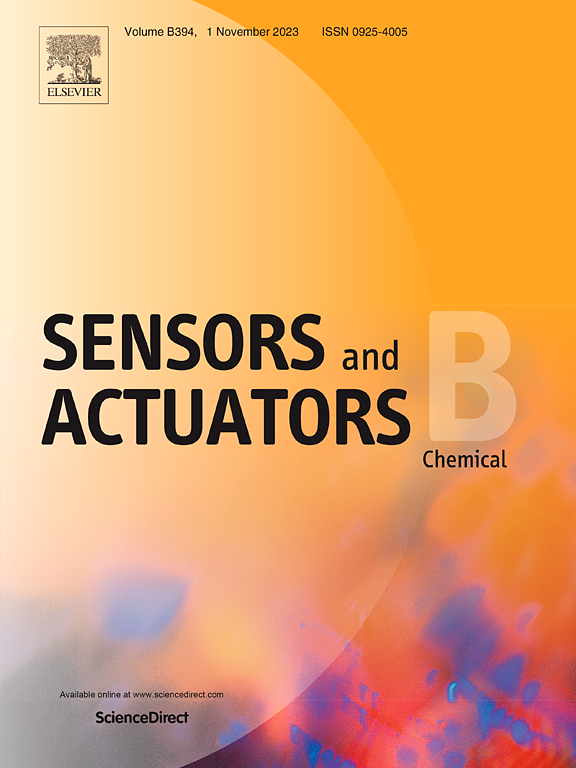Surface plasmon resonance based ultra-sensitive cholesterol detection using AuNPs/MPBA/β-CD functionalized gold-coated tilted fiber Bragg grating
IF 8
1区 化学
Q1 CHEMISTRY, ANALYTICAL
引用次数: 0
Abstract
Cholesterol is one of the key indicators in clinical biochemical testing and the diagnosis and treatment for diseases. Here we develop a high-sensitivity cholesterol concentration sensor based on tilted fiber Bragg grating surface plasmon resonance (TFBG-SPR) technology. The sensor excites surface plasmon resonance (SPR) by coating a gold film on the surface of TFBG, and then sequentially assembles gold nanoparticles (AuNPs), 4-mercaptobenzoic acid (MPBA) and β-cyclodextrin (β-CD) on the surface of the gold film through self-assembly technology to realize a cholesterol fiber probe. The high surface area ratio of AuNPs can effectively increase the number of β-CD bound to their surface, thereby increasing the binding sites between β-CD and cholesterol. MPBA can bind with β-CD to form a structure with a conical hydrophobic cavity, which stabilizes hydrophobic molecules such as cholesterol through hydrophobic interactions and non-covalent forces such as van der Waals forces, encapsulating cholesterol to form stable inclusion complexes. The experimental results showed that there is a good linear relationship between the intensity change of SPR resonant peak and the concentration of cholesterol solution. The proposed sensor shows a detection limit of 0.002 fM, which is four orders of magnitude lower than that of the existing similar cholesterol sensor.
基于AuNPs/MPBA/β-CD功能化镀金倾斜光纤布拉格光栅的表面等离子体共振超灵敏胆固醇检测
胆固醇是临床生化检测和疾病诊治的关键指标之一。本文研制了一种基于倾斜光纤布拉格光栅表面等离子体共振(TFBG-SPR)技术的高灵敏度胆固醇浓度传感器。该传感器通过在TFBG表面涂覆金膜激发表面等离子体共振(SPR),然后通过自组装技术在金膜表面依次组装金纳米粒子(AuNPs)、4-巯基苯甲酸(MPBA)和β-环糊精(β-CD),实现胆固醇纤维探针。AuNPs的高表面积比可以有效地增加β-CD结合到其表面的数量,从而增加β-CD与胆固醇的结合位点。MPBA可与β-CD结合形成具有锥形疏水腔的结构,通过疏水相互作用和范德华力等非共价力稳定胆固醇等疏水分子,包封胆固醇形成稳定的包合物。实验结果表明,SPR共振峰的强度变化与胆固醇溶液浓度之间存在良好的线性关系。该传感器的检测限为0.002 fM,比现有的同类胆固醇传感器低4个数量级。
本文章由计算机程序翻译,如有差异,请以英文原文为准。
求助全文
约1分钟内获得全文
求助全文
来源期刊

Sensors and Actuators B: Chemical
工程技术-电化学
CiteScore
14.60
自引率
11.90%
发文量
1776
审稿时长
3.2 months
期刊介绍:
Sensors & Actuators, B: Chemical is an international journal focused on the research and development of chemical transducers. It covers chemical sensors and biosensors, chemical actuators, and analytical microsystems. The journal is interdisciplinary, aiming to publish original works showcasing substantial advancements beyond the current state of the art in these fields, with practical applicability to solving meaningful analytical problems. Review articles are accepted by invitation from an Editor of the journal.
 求助内容:
求助内容: 应助结果提醒方式:
应助结果提醒方式:


